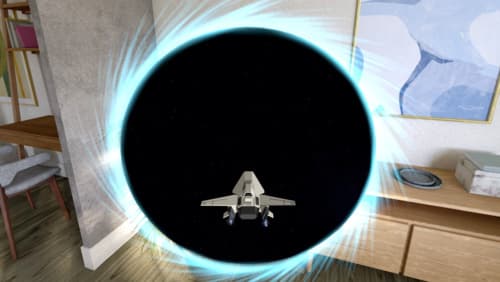What's the difference between ARKit and RealityKit?
Asked on 2024-07-16
116 searches
The primary difference between ARKit and RealityKit lies in their focus and capabilities for creating augmented reality (AR) and spatial experiences.
ARKit
ARKit is a framework designed to help developers create AR experiences by leveraging the device's camera and motion sensors. It provides tools for tracking the environment, detecting surfaces, and placing virtual objects in the real world. ARKit is primarily focused on the following:
- Environmental Understanding: Detects horizontal and vertical surfaces, tracks the position and orientation of the device, and understands the lighting conditions of the environment.
- Object Detection and Tracking: Recognizes and tracks images, 3D objects, and faces.
- Motion Capture: Captures and analyzes human body motion in real-time.
RealityKit
RealityKit, on the other hand, is a high-performance 3D simulation and rendering framework that builds on top of ARKit to provide more advanced capabilities for creating immersive spatial experiences. It is designed to work seamlessly across iOS, iPadOS, macOS, and visionOS. Key features of RealityKit include:
- High-Performance Rendering: Provides real-time rendering capabilities for creating visually rich 3D content.
- Simulation: Supports physics-based simulations for realistic interactions between virtual objects.
- Advanced APIs: Offers APIs for creating complex animations, dynamic lighting, and custom shaders.
- Integration with Reality Composer Pro: Allows for intuitive editing and placement of virtual content.
- Cross-Platform Capabilities: Ensures that the same content can be used across different Apple platforms.
Summary
- ARKit: Focuses on environmental understanding, object detection, and motion capture to create AR experiences.
- RealityKit: Builds on ARKit to provide advanced 3D rendering, simulation, and animation capabilities for creating immersive spatial experiences across multiple Apple platforms.
For more detailed information on RealityKit, you can refer to the session Discover RealityKit APIs for iOS, macOS and visionOS.

What’s new in USD and MaterialX
Explore updates to Universal Scene Description and MaterialX support on Apple platforms. Discover how these technologies provide a foundation for 3D content creation and delivery, and learn how they can help streamline your workflows for creating great spatial experiences. Learn about USD and MaterialX support in RealityKit and Storm, advancements in our system-provided tooling, and more.

Discover RealityKit APIs for iOS, macOS and visionOS
Learn how new cross-platform APIs in RealityKit can help you build immersive apps for iOS, macOS, and visionOS. Check out the new hover effects, lights and shadows, and portal crossing features, and view them in action through real examples.

Build a spatial drawing app with RealityKit
Harness the power of RealityKit through the process of building a spatial drawing app. As you create an eye-catching spatial experience that integrates RealityKit with ARKit and SwiftUI, you’ll explore how resources work in RealityKit and how to use features like low-level mesh and texture APIs to achieve fast updates of the users’ brush strokes.
